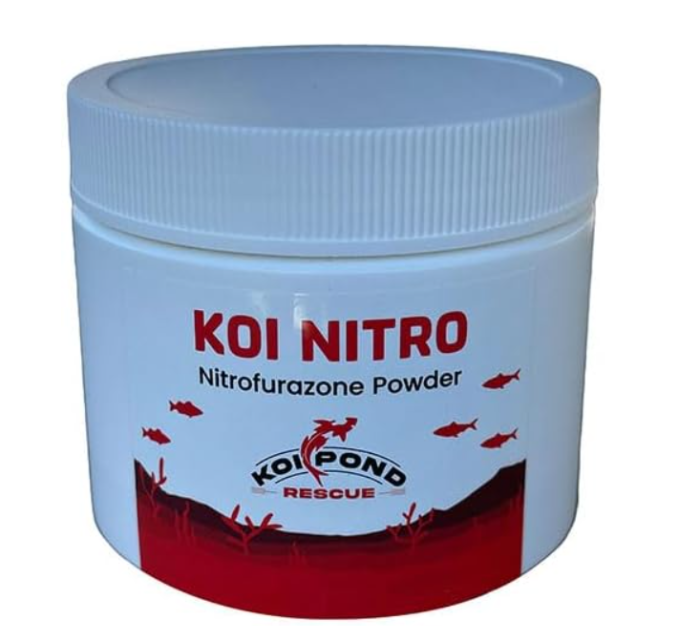About 3 or so days ago I noticed Slade had swollen lips. I'm like why is it only my most favorite fish are struck with this...I decided on a different course of action this time. Having lost 4 hrps to Columnaris I jumped on this right away. Two 90% water changes and massive salt (10lbs in the 125). I decided to treat the entire tank this time. Supposedly salt works on Columnaris the same way it does Ick. I also added a full treatment of Kanaplex which amounted to 25 scoops or 2/3 bottle.
For those of you not familiar with Slade, he is one of the 'big three' in the hrp dynasty. He along with Mongo and Pip have produced over 800 descendants. I'm hoping to save him.
I also have a container of Furan-2 type powder on tap (will post a picture later). It's for koi ponds but the stuff isn't cheap. A large pack is 75 bucks and the cup container is 45. But its powerful according to gram dosage. The smaller pack sizes aren't available until the end of the month.
I said earlier I have a theory as to why this is a chronic problem in the 125 despite having no new fish introduced. I'll share it now.
Because there are adult males in this cichlid group they get a bit aggressive at times. Mouths get injured which paves the way for tank pathogens to get in. At least that's my take on it.
I am cautiously optimistic for once. Unlike the others who succumbed, Slade doesn't have any pimples/eye swelling nor is he hiding or sitting at the bottom. He has a favorite spot he rests in mid level but avoids any frontal face offs for obvious reasons.
He also will swim around the tank. The others never did this. His tail is slightly tatty but not shredded looking. The lips appear to be stabilized (slightly?) better at the moment. Monday the tank will get another treatment.
These fish are so intelligent. He knows when I'm trying to see and turns his head and hides his mouth. I'll patiently wait and he eventually comes into the open where I can observe.
The salt definitely perked him up in the last two days (prior to the kanaplex) so we'll see.
Most impressive? His two largest sons, Brutus and Squiggy. They act as guardians and won't let the others hassle Slade or get near when he's relaxing. This is good because a stressed fish doesn't heal as well.
Will give updates. Here's the backup medicine:

For those of you not familiar with Slade, he is one of the 'big three' in the hrp dynasty. He along with Mongo and Pip have produced over 800 descendants. I'm hoping to save him.
I also have a container of Furan-2 type powder on tap (will post a picture later). It's for koi ponds but the stuff isn't cheap. A large pack is 75 bucks and the cup container is 45. But its powerful according to gram dosage. The smaller pack sizes aren't available until the end of the month.
I said earlier I have a theory as to why this is a chronic problem in the 125 despite having no new fish introduced. I'll share it now.
Because there are adult males in this cichlid group they get a bit aggressive at times. Mouths get injured which paves the way for tank pathogens to get in. At least that's my take on it.
I am cautiously optimistic for once. Unlike the others who succumbed, Slade doesn't have any pimples/eye swelling nor is he hiding or sitting at the bottom. He has a favorite spot he rests in mid level but avoids any frontal face offs for obvious reasons.
He also will swim around the tank. The others never did this. His tail is slightly tatty but not shredded looking. The lips appear to be stabilized (slightly?) better at the moment. Monday the tank will get another treatment.
These fish are so intelligent. He knows when I'm trying to see and turns his head and hides his mouth. I'll patiently wait and he eventually comes into the open where I can observe.
The salt definitely perked him up in the last two days (prior to the kanaplex) so we'll see.
Most impressive? His two largest sons, Brutus and Squiggy. They act as guardians and won't let the others hassle Slade or get near when he's relaxing. This is good because a stressed fish doesn't heal as well.
Will give updates. Here's the backup medicine:



